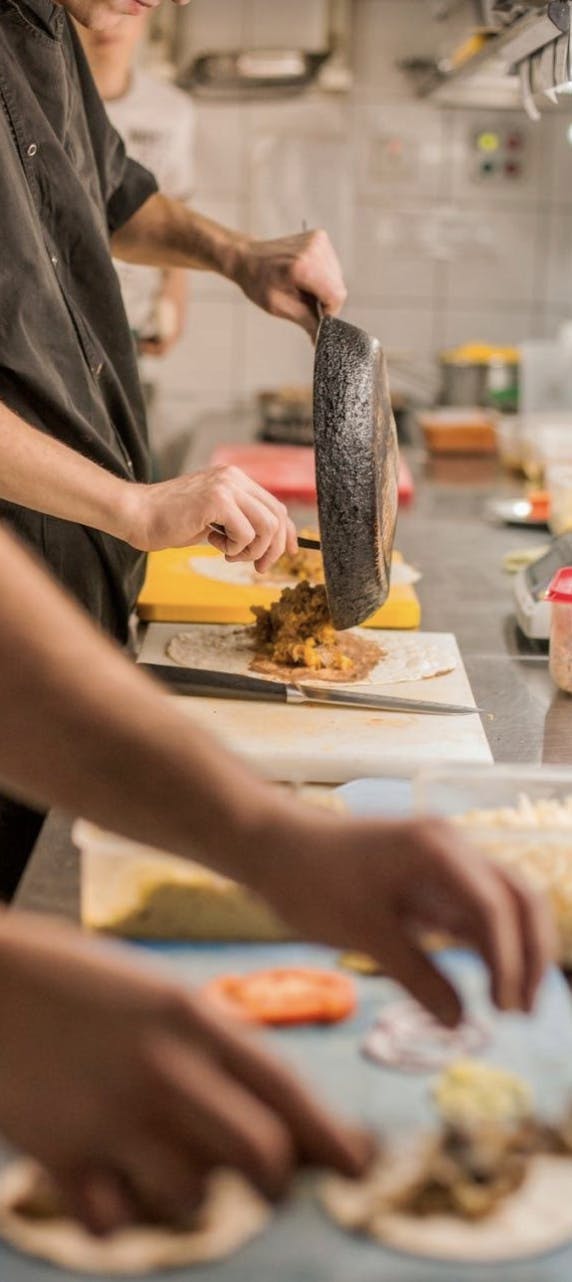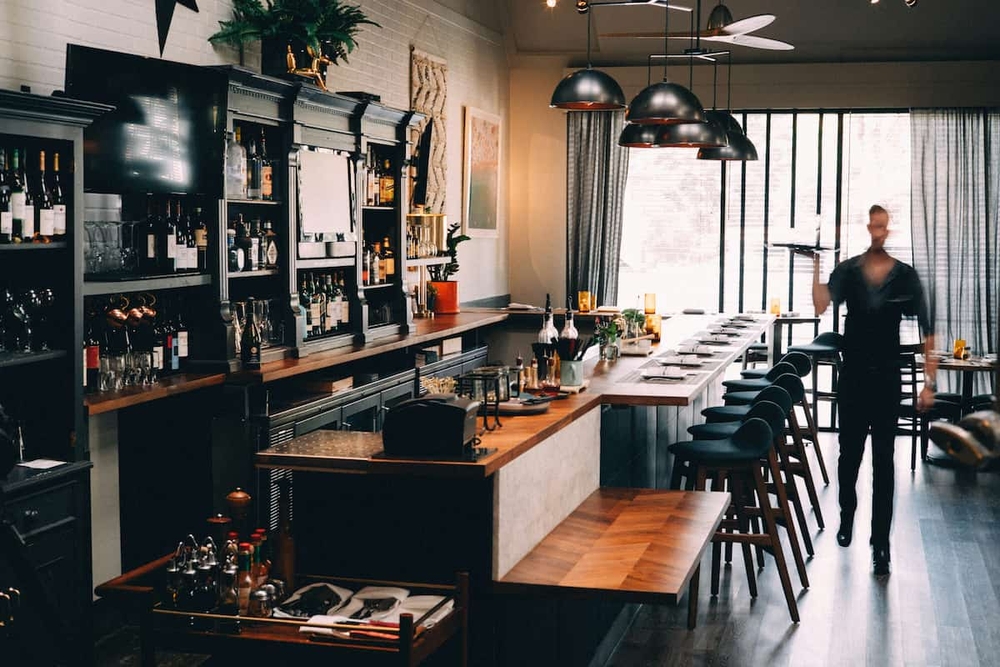How to use reservation apps like OpenTable, Yelp and Resy for your restaurant success
Table of Contents
CloudKitchens
How many tacos can be delivered from a 1000sqft restaurant?
The same amount as a 200sqft ghost kitchen.
As the restaurant industry continues to embrace digital transformation, reservation apps have become essential for managing customer flow and improving the dining experience. With customers increasingly choosing online booking, popular reservation platforms like Resy, Eat App, and OpenTable streamline the reservation process, helping restaurants manage occupancy, reduce wait times, and increase engagement.
Understanding how to make the most of these tools can significantly enhance your restaurant’s operational efficiency and customer satisfaction!
Benefits of Using Reservation Apps for Restaurants
Improved Customer Experience
Reservation apps make it easy for customers to book tables at their convenience, whether from a mobile app or website. This seamless booking process leads to a better overall dining experience by allowing customers to plan their visits, avoid long waits, and enjoy a more personalized service.
Better Seat Management
By optimizing seating arrangements, reservation apps help maximize occupancy, particularly during peak hours. This feature is invaluable for increasing seat turnover, helping restaurants accommodate more customers and make the most of their available space.
Data Collection
With reservation apps, restaurants gain access to valuable customer data, including dining preferences and visit frequency. This data enables restaurants to deliver personalized service and fine-tune their offerings based on trends, helping foster loyalty and repeat visits.
Increased Revenue
Effective seating management through reservation apps can lead to higher profits, as restaurants can serve more customers efficiently, especially during high-demand times. This means more revenue opportunities from turning tables faster without compromising customer satisfaction.
Read More: How to successfully promote your restaurant and build a loyal customer base with 12 tips!
Popular Reservation Apps for Restaurants and Their Key Features
Eat App
Eat App is a versatile tool that provides customizable reservations, allowing restaurants to manage waitlists, organize customer profiles, and integrate with POS systems. These features ensure efficient seating arrangements and enhance the customer experience by reducing wait times.
Resy
Resy focuses on creating memorable guest experiences with features like social media integration, and targeted marketing tools. This platform helps drive customer engagement and retention, making it ideal for restaurants aiming to build a loyal customer base.
OpenTable
As an industry leader, OpenTable offers a comprehensive suite of tools for reservation management, customer feedback collection, and a vast user base. With options for subscription fees or per-reservation charges, OpenTable is a go-to for restaurants seeking broad exposure and comprehensive customer insights.
Read More: Innovative restaurant technology trends
Best practices for using reservation apps to boost restaurant success
Optimize table turnover
With effective reservation management, you can strategically configure seating arrangements to maximize occupancy during peak times. Many reservation apps provide tools to estimate table turnover time and set staggered reservation slots, preventing bottlenecks and ensuring tables are ready when the next guests arrive.
To maximize turnover while maintaining a positive customer experience, consider creating flexible seating options and reserving a few tables for walk-ins, particularly during off-peak hours. This can help balance the guest flow, especially on busy nights.
Utilize Customer Data
Reservation apps collect valuable customer data, including preferences, allergies, and even seating choices, which can be leveraged to personalize service. Use this data to tailor dining experiences by offering customers their preferred seating or dishes based on past visits.
Beyond service, customer data can help identify dining patterns, such as peak times and popular menu items, providing insights that support marketing efforts and menu adjustments. For instance, if you see repeat customers preferring specific dishes, consider featuring those items in promotions to attract similar patrons.
Offer Exclusive Reservations
By offering special reservation opportunities like VIP access or exclusive bookings during holidays, you can create buzz and attract high-value customers. These offerings can include early access to special menus or events for customers who have dined multiple times at your establishment.
Additionally, you can leverage loyalty programs linked with reservation apps to encourage regular patrons to earn points or rewards for booking directly through your platform, making them feel valued and increasing their loyalty to your restaurant.
Integrate with Marketing Efforts
Utilize reservation data to fuel marketing campaigns and better target your audience. By analyzing data on peak times, popular dishes, and frequent guests, you can create targeted offers or promotions that align with customer preferences.
For example, if you notice a trend of frequent diners on weekends, promote special weekend discounts or events via social media, newsletters, and in-app notifications. Syncing reservation systems with social media and review platforms like Yelp allows customers to reserve directly from these channels, boosting both reservations and visibility.
Read More: How much does it cost to start a restaurant business?
Steps to Implement a Reservation App in Your Restaurant
Assess Your Needs
Understanding your restaurant’s specific needs is crucial for choosing the right reservation app. If your establishment has high walk-in traffic, look for apps that allow seamless integration with waitlist management. For restaurants with a focus on returning guests, prioritize apps that offer in-depth customer profiles and loyalty features.
Additionally, consider the app’s cost structure, such as subscription fees or per-reservation charges, to find an option that fits your budget. Opt for a scalable solution that can adapt as your restaurant grows.
Train Staff
Properly training your staff to use the reservation app ensures smooth operation and a positive guest experience. Training should cover basics like checking reservations, modifying bookings, and managing the waitlist. Instruct staff on how to handle different reservation statuses, such as early arrivals, walk-ins, or no-shows, using the app’s interface.
They should also know how to leverage customer profiles to deliver personalized service. Regularly update staff on new app features or troubleshooting tips to prevent disruptions during peak hours.
Promote Online Reservations
Promoting your online reservation option is key to maximizing its effectiveness. Add clear calls-to-action (CTAs) on your website, social media profiles, and email newsletters encouraging guests to book online. Many apps allow for integration with social media platforms, enabling customers to reserve directly from Instagram or Facebook.
Consider offering an initial incentive, like a discount or drink offer for first-time online reservations, to encourage customers to use the app and get comfortable with the digital booking experience.
Monitor and Adjust
Regularly review the data from your reservation app to monitor booking trends, customer feedback, and any operational bottlenecks. Assess factors like peak booking times and common cancellations or no-show reasons, adjusting your reservation policies and timing accordingly.
For example, if you observe high no-show rates on weekends, implement a policy requiring credit card deposits for peak times. Continuously refining your approach based on data insights can improve efficiency and the overall guest experience.
Read More: 5 important elements for restaurant branding
Common Challenges and Solutions with Reservation Apps
No-Shows
No-shows can be a significant revenue drain, but reservation apps often provide tools to help mitigate this issue. Implement policies requiring credit card deposits or small cancellation fees for peak times to reduce no-shows.
Many apps also have reminder features that send notifications or SMS reminders to customers before their reservation, helping reduce the likelihood of last-minute cancellations. Another tactic is to create a waitlist option for overbooked periods, allowing you to quickly fill spots when no-shows occur.
Overbooking
Balancing reservations with walk-ins can be challenging, but many apps have settings that help prevent overbooking. Start by configuring your app to allow a specific number of walk-ins or hold a few tables for flexibility.
If your restaurant has high demand, set a maximum number of reservations per time slot to avoid overcrowding. You can also track reservation and cancellation patterns, adjusting your availability dynamically based on historical data to ensure you have enough tables for both reservations and walk-ins.
Technical Difficulties
Technical issues with reservation apps can disrupt service, so it’s crucial to ensure that both the app and your team are prepared. Train your staff on basic troubleshooting steps, like restarting the app or logging back in, and ensure they know how to handle reservations manually in case of app failure.
Keep a backup system or spreadsheet for reservations, especially during peak hours, to minimize any disruptions. Regularly update your app and software to prevent compatibility issues, and work with a tech support provider who offers fast assistance if issues arise.
Drive restaurant success with CloudKitchens
Reservation management is essential to run a smooth and profitable restaurant, but it’s only part of the picture. In a busy physical restaurant, balancing dine-in customers with the demands of delivery orders can quickly create bottlenecks. Overcrowded kitchens, delayed orders, and a strained customer experience are common challenges that can impact both customer satisfaction and your bottom line.
CloudKitchens provides a complete suite of technology solutions to help you manage not only reservations but also delivery and kitchen operations. By leveraging ghost kitchens, you can separate your delivery operations from your physical restaurant, reducing stress on your staff and improving service for both dine-in and delivery customers.
Whether you’re looking to optimize reservations, increase seat turnover, enhance customer experience, or streamline delivery operations, CloudKitchens has the tools to support your growth.
Visit CloudKitchens.com today to see how we can help simplify your restaurant’s journey to success and turn delivery from a challenge into an opportunity.
More insights & stories
There’s more where that came from.
Get in the know and check out our additional insights





